Often people are mistaken when they claim that there are no specific drills for improving their blocking. This statement is entirely incorrect. There are 4 key areas to improve and develop your block around, and I have given one drill with each for you to practice though there are many variations on exercises that will aid your blocking practice.
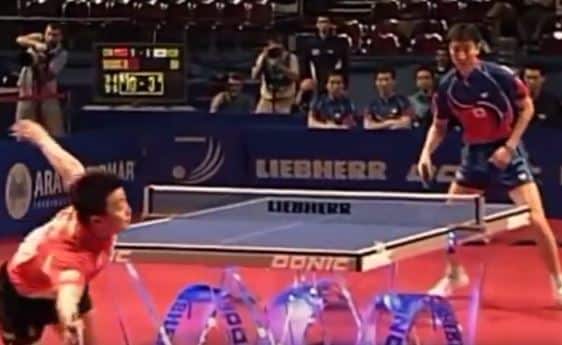
Table of Contents
Consistency
A consistent block is a powerful weapon. Returning a significant number of balls by blocking reduces energy use in your game and, on occasions, ends up wearing your opponent out if they are not as fit or consistent.
Blocking consistency is also essential for training. Simple exercises where you block all balls and your training partner hit anywhere are an excellent opportunity to build your consistency over the whole table. Your aim should be not to miss, making sure you move for each ball and keep your block simple.
Placement
Placement is one of the more powerful weapons for blocking players as it presents openings and takes your opponent out of their playing zone or off balance. A good drill for practicing placement is blocking from your backhand side free to the table.
It would be best if you focused on making it as difficult as possible, using placement, for your training partner to be able to move into position or hit a comfortable shot. It means targeting the body and wide frequently and avoiding the main forehand and backhand zones.
Adjustment
Adjusting your block is also very important. If you are a blocking player mainly, then the opponent’s tactics usually involve changing the ball’s spin and pace. Your job is to keep on top of each change and adjust accordingly.
A ball with more spin requires a more closed bat angle, and the slower spinny loops need your bat to be brought up to cover the ball. These loops can be the hardest to control as keeping the return low, and control is difficult.
Adjusting for pace is a bit easier. A slower attack often requires a firmer grip on your bat when blocking, and a faster attack is easier to block with ‘softer hands.’ It, however, becomes variable when you get more experienced with blocking and can interchange both.
A great drill for practicing this is to have your training partner first begin alternating between a slow spinny loop and a more forward faster loop. You can practice this to either fixed forehand or backhand. It develops into your partner looping free varied loops and potentially to unfixed points on the table, including the extra practice crossover.
Variation of Pace
Varying a block’s pace is sometimes the method by which more passive players can control the table or open up a rare opportunity to attack. Combining slow and fast blocks is a weapon for a blocker. Slow blocks serve the purpose of disrupting the rhythm.
They force an opponent to come back into the table to be in the position of having forced an opponent back far enough. A soft block can potentially end a point.
Exercises for this include blocking your partner’s forehand and blocking one soft and one hard. You can also combine this with the middle-wide exercise by blocking soft to the body, hard vast, hard to the body, soft wide, etc.
So as you can see, there are 4 critical aspects to blocking, and they need to be practiced. As with any aspect of the game, some drills can develop your blocking skills.
To practice these skills in match play, you can play a few sets where you only block and not play full attacking strokes.
If you seek more advanced blocking techniques, you can also practice the variation of spin on your blocking. Topspin blocking is becoming more and more popular. It merely involves brushing the ball on your blocking contact to add topspin. It provides a little more pace and kicks on the ball.
You can add this as a variation into any of your drills, perhaps choosing to topspin block every 4-5 balls as an example. Learning topspin block is mainly down to timing and is the first step you need to take when developing a short-swing counter-loop stroke.
As always, I hope this is something a little different for you. Consistency is something we all need in our games. We cannot always be in the attacking position, so it is essential to devise skills that will help us reposition ourselves to attack or bring down those who should attack against us. Sounds heroic! Good luck training your blocking!
Is Blocking Stroke Good For You?
In table tennis, the blocking technique is one of the strokes in this sport, which tends to under-rated. Especially at lower levels, many players are so busy trying to emulate the top players, and most of them forget that simple blocks can win them matches.
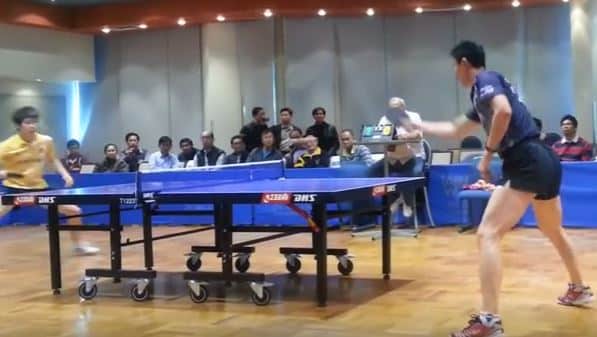
A block’s upside is that it does not require any stroke production, so it is easy for a lower level player to be consistent. The downside is that it can be a negative tactic and ultimately a player’s downfall if overused. It is an essential part of most players’ games and challenging if used in conjunction with an all-round game.
Many blocks, if used correctly, can get your opponent out of position. When practicing your block, you also need to practice placement. You need to hit the corners and the middle, and you need to do that from various positions on your end of the table with different paces. And, of course, practice blocking. It is an important skill.
Who Should Avoid Playing Blocking Stroke?
Most people who don’t do any physical training besides playing table tennis and who don’t play more than 10 hours per week try to avoid blocking as much as possible because unless you are dead tired, one should not block simply because you want to win.
Your focus should be on more offensive strokes for exercise and your health first. It will lead to good productivity. For those who are more competitive and trains a lot, blocking is a sure way to victory.
Your Focus Should Be On Offensive Strokes
Generally, it is better to be an attacker rather than a defensive player. A counter-attack puts your opponent under pressure. And yes, a block can also lead you to a point if you know how to use it well. Not just blocking your opponent’s attack, it should have an excellent placement to put your opponent off-balance and become defensive rather than offensive. Thus, if you are an offensive player in nature, it’s best to learn active strokes than passive ones.
Nonetheless, one should occasionally use the blocks to neutralize the opponent’s stroke by the placement of the return or as a counter-offensive stroke.
As long as you practice frequently, you will master the blocking strokes and make it your defensive weapon, and you can even counter-attack your opponent to win the game.

Warren Davies

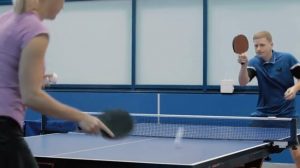
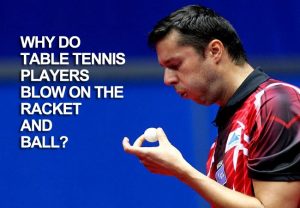
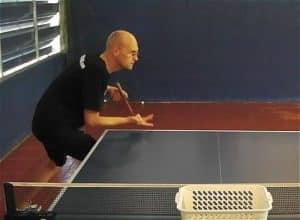
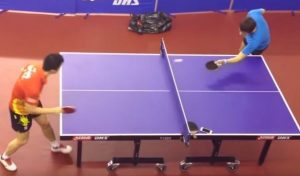
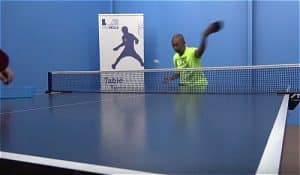

1 thought on “Practicing Blocking Skills”
What do they mean on blocking slow spinny balls, to bring your bat up to cover the ball? How far up should the bat be, what angle of closure and when should contact with the ball be made (peak of the ball bounce, what???)
I’m a very good blocker, but mainly on the fast loops, the very slow spinny ones that have more top spin than speed are trickier for me.